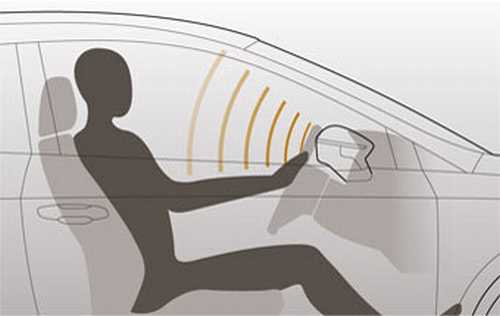Driver fatigue recognition system as it works
As statistics show, about a quarter of all accidents occur due to the overwork of the driver during a long trip. The studies did not give too comforting results: after four hours of continuous driving, the driver's reaction slows twice, and after eight - six times. Each automaker seeks to make its cars as safe as possible, from here for the first time and the idea of \u200b\u200bdeveloping a driver fatigue sensor, which could recognize the degree of fatigue and submit a signal to make a stop for rest.
How did the driver fatigue control system appeared
The first company, seriously adopted for the implementation of the driver's fatigue control system, was the Japanese company Nissan. She began his own research in the 70s of the last century, and in 1977 the company patented the results of its engineers. A temporary obstacle for further work was to be interested in simpler, but equally important security systems, namely ABS, ESP and EBD. As a result, the first system of controlling the driver's fatigue, almost thirty years later appeared on the car, when the work of other systems remains only to improve.
The first firm who managed to implement all engineering surveys in practice was the Swedish company Volvo. Its system received the name Driver Alert Control. It includes a camcorder that tracks the position of the car on the road and its trajectory, and the sensor registers the frequency of the steering movement. When the car begins to deviate greatly from the normal trajectory, the system "offers" to stop and relax.
Later, a similar fatigue recognition system was developed by Mercedes. The Germans decided not to use the camera, leaving only the steering wheel sensor and the sensor registering the strength and frequency of presses on the pedal. Information about what averaged indicators should be, if the wheel is cheerful and attentive driver are entered. If current values \u200b\u200bare significantly different from the reference, it means that the driver was tired. The disadvantage of the system is that it works on presets, i.e. Does not take into account the peculiarities of a particular person. In later versions of the systems, the frequency of clicking the climate and radio control buttons are also analyzed, as well as external conditions - the power of the side wind and the quality of the road fabric. This allowed the system to adapt to a specific driver.
Similar systems are used on Volkswagen and Skoda cars. It is installed on the Skoda Octavia cars only as an option, regardless of the configuration, while the Passat has it regular, starting with the Comfortline configuration.
Ways to implement the system
There are two ways to implement a similar function. In the first case, a special sensor registers only the parameters of the movement of the car, namely the frequency and the amplitude of the imagining movements, pressing the gas and brake pedals. Adherents of this option are European manufacturers: Mercedes, Volkswagen, Skoda, Volvo.

Japanese firms seek to realize the control of the driver's fatigue somewhat differently. They are convinced that in the first place it is necessary to analyze a psycho-emotional state. Therefore, the main link of such a system is a camcorder whose task is to follow the facial expressions and gestures of the one who is driving. It works as follows. First of all, the driver's fatigue recognition system reacts to closed eyes. If the driver closes his eyes, the system immediately applies a warning signal. In front of the engineers there is a task to "teach" it to distinguish it when the driver is just blinking, and when falling asleep. In addition, the frequency of the morgue, eye movement, facial pain, gestures, frequency and depth of breathing (in the movements of the chest) are analyzed.
How the driver's fatigue control system works
In general, regardless of the method of implementation, the control of the driver's fatigue works as follows. The first time the control unit collects and analyzes all the information coming from sensors and video cameras. As a result, the system determines the style of driving driver and external conditions (time of day, road condition, wind). This data becomes reference, in the future the incoming information is compared with the existing, for timely recognition of the driver's fatigue.
Different cars on the initial data collection are required different times, for example, Mercedes SLK does it for half an hour, Volkswagen Passat and Skoda Octavia are limited to 15 minutes.
Such an approach is largely expanding the capabilities of the recognition system, since the control of the driver's fatigue is carried out not by some template, and the indicators of a particular person sitting as the starting data are taken as the source data.










